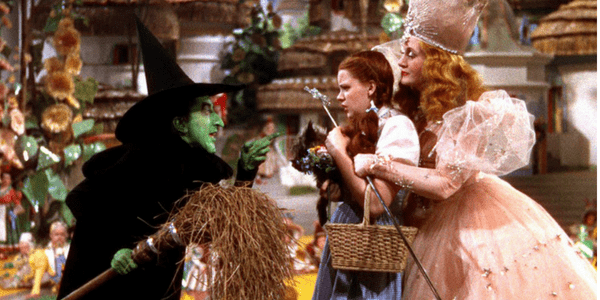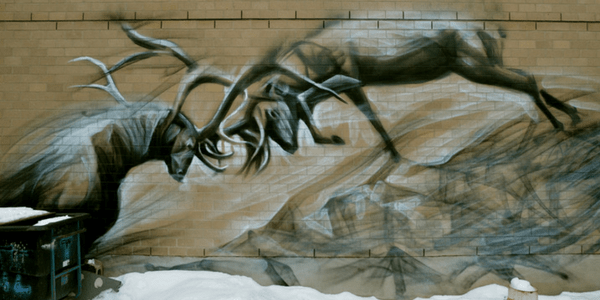 A new movie, Gods of Egypt, has recently ruffled more than a few feathers as promos for the film were released and all of the gods from an African country were, more or less, white. You can look at this as just another example of Hollywood whitewashing and question why such a topic would be brought up in a magazine devoted magick, mysticism and spirituality, but the sad thing is, even in enlightened communities such as our own, this same sort of whitewashing happens in spiritual practice. This form of cultural appropriation is often overlooked but just as insidious and harmful as wearing an Indigenous headdress to a festival.
A new movie, Gods of Egypt, has recently ruffled more than a few feathers as promos for the film were released and all of the gods from an African country were, more or less, white. You can look at this as just another example of Hollywood whitewashing and question why such a topic would be brought up in a magazine devoted magick, mysticism and spirituality, but the sad thing is, even in enlightened communities such as our own, this same sort of whitewashing happens in spiritual practice. This form of cultural appropriation is often overlooked but just as insidious and harmful as wearing an Indigenous headdress to a festival.
The first question is, how does one whitewash a spiritual being? There is the blatant case of what Hollywood has done with this new film but that is not worship, that’s entertainment and is a similar but separate conversation. This same sort of practice shows up in our media as well. It is very subtle but it is there. If you happen to look at the covers for books, websites that feature newly made imagery that depicts different spirits are deities you will notice a trend. Many of these newer depictions have lost much of the markers of the cultures that they came from. Their facial features, hair, and bodies have been subtly changed to appeal to a more European ideal.
They may not literally have white skin but they no longer have the features native to the people who created them. So it’s Kali, but instead of looking like a beautiful and ferocious Indian woman, she’s basically a white woman with a really, really intense tan. Or conversely, a Set with pale skin that presides over a desert land. This is problematic as it helps to divorce a belief system from the culture that created it. In order to look more deeply into why this is an issue, you must first understand what cultural appropriation is.
Cultural appropriation is often misunderstood. Many people mistakenly believe it means to engage in any practice outside of your own cultural background and regardless of intent or practice, doing so is considered a negative. This isn’t true. There are many correct and respectful ways to engage with another culture and adopt aspects into your own belief systems and practices, however, there are wrong and right ways to do this. When it is done incorrectly, that is cultural appropriation.
Which is to say, simply practicing a spirituality from a culture other than your own is not wrong or bad. If you take the time to learn and practice respectfully, then that’s wonderful! But while you’re mediating, channeling, invoking, or whatever practice you are partaking in, take a moment to think about how you see the deities and spirits. Do they look like the culture they came from? Or do they look more like you?
This form of cultural appropriation is very subtle and also very dangerous. Many of the spiritual practices that Western people have adopted often have a history of the culture that founded them being ridiculed for their beliefs at best and barred from practicing all together at worst.
By changing the appearance and viewing them through a Western gaze, we are further divorcing these practices from the cultures that bore them. It may not seem like a very big deal but it is very easy to forget that worship you find such comfort in originated somewhere else. It is important to pay proper respect to that.
A big part of cultural appropriation is removing the practice from its originators. The easiest way to do this to remove the physical representations of the people from our practice. If you are envisioning a spirit or deity from another race with features closer to a Western standard then it becomes much easier to accept similar representations outside of your own mind.
Whitewashing, even in your own head, creates ripples. When you see art, or devotional objects that feature beings with these features, even if they should be people of colour, the practitioner is less likely to challenge this. It makes these images riper for consumption by people who have no respect for the practice and see religious icons as more decoration than anything. Once the respect for a belief has been removed it becomes much easier to ridicule people who practice it and this ridicule tends to fall firmly in the laps of people of colour.

Of course there is an element of syncretism, especially if you practice multiple beliefs and create more of your own way. This is fine to do but it is important to remember not to strip away the culture of the original. If you are borrowing form multiple beliefs, it is very important that you remain respectful in your practice. We should not change the appearance of these spirits to be more pleasing to us anymore than we should ignore aspects of them that we don’t agree with.
For example, you wouldn’t profess to practice Vodun, but build an alter where all your depictions are of people with blonde hair, and only make offerings of energy bars and sodas. Any real practitioner would at best laugh and at worst be deeply offended. Although you may be surrounded by other white people and survive on that sort of food, it is unlikely that these spirits would truly manifest in that form or accept such offerings.
Although my example was comical (can you imagine such a travesty?) the reality is that whitewashing also shows a lack of true faith in a belief. Whitewashing gives the ability exist at the surface without making a true connection to an energy. This is cultural appropriation.
Being more mindful in your own practice will not stop things like Hollywood casting white actors to portray gods from a country in Africa. Nor will it keep people from using iconography as decorations for their apartments however, this small change can go a long way in helping people become more mindful in their own practices which, in the same way that whitewashing ripples, can help breed respect for various traditions in an outward manner.
A simple way to keep yourself from whitewashing is to take time to connect with the originators of your practice. Learn about their culture, research early depictions of the deity or spirit. If none exist, take time to meditate on how the people of that time may have seen them and work this view into your own practice.
The key to avoiding this is really being mindful and not taking for granted your own gaze as you practice. Reading and learning is really part of any practice but taking that extra step to encourage an inner image that is true to the deity will go a long way in ensuring that your practice is respectful and avoids this common pitfall.
Spirits and deities manifest in all sorts of manners but keeping their origins in mind will go a long way to helping form mindful and respectful practices.
Image credits: John Matthies, Dave Lawler








